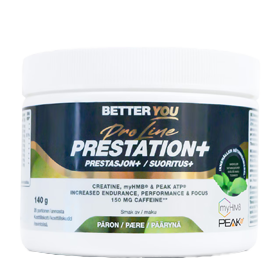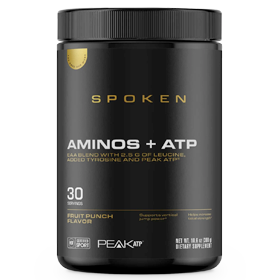 Q: First off, congratulations on being invited to compete at the 2017 Arnold International Pro Deadlift event! This will be your 8th year competing at this event, how does it feel?
Q: First off, congratulations on being invited to compete at the 2017 Arnold International Pro Deadlift event! This will be your 8th year competing at this event, how does it feel?
BD: Thank you! It feels absolutely amazing! Competing at the Arnold Sports Festival is a special experience. It is fun in so many ways – the excitement and buzz surrounding the event is enormous, there is something to see for every fan of strength sports, there are nearly 200,000 people that attend the festival, and from a competitor standpoint it is the biggest stage to compete on.
Q: What will your training cycle look like leading up to this event?
BD: I am training 3 days/week and my weekly template is set up as follows:
|
Day 1 |
Day 2 |
Day 3 |
|
Main Squat |
Main Bench Press |
Main Deadlift |
|
Accessory Bench Press |
Accessory Squat |
Accessory Bench Press (triceps) |
|
Accessory Deadlift |
Upper Back |
Accessory Posterior Chain |
|
Upper Back |
Accessory Posterior Chain |
Upper Back/Shoulders |
I have been rotating Romanian Deadlifts and Vert Deadlifts on day 1 for my accessory deadlift movement. My accessory posterior chain movement for day 2 has been and will continue to be reverse hypers for the entire training cycle. My main deadlift movement on day 3 has been either a deadlift from the ground or a version of deadlift to work on top end strength (either rack pull or deadlift off of blocks). My accessory posterior chain movement for day 3 has been either dumbbell or barbell rear foot elevated split squats. I have found these to be an excellent glute developer and the glutes are very important in the deadlift.
Q: How has your programming differed from the past?
BD: In terms of programming I have been deadlifting heavy a lot less frequently. I used to deadlift heavy nearly every week with planned reload weeks built into my training. Now, I deadlift heavy 1 out of every 3 or 2 out of every 4 weeks. I think this what I can contribute my health to right now. My body feels great and I am the strongest I have ever been. Additionally, I no longer do any long-term planning of my training. Of course, I have a general skeleton and idea of where my training needs to go, but I do not plan out the details (i.e. movements, sets and reps) any more than a week before I actually do a given training session. I consider myself to have a fairly high training maturity, especially in the deadlift. Therefore, I have a good understanding of how my body is going to adapt to a given stimulus, what it can handle next, and what movements/intensity/volume I need at a given time to continue to progress in strength. Finally, I have been determining my working loads more and more using the RPE (rate of perceived exertion) system and less and less using a percentage-based system. Percentages of 1-repetition maximum are not a bad way to determine training intensity on a given movement. However, they do not account for individual day-to-day training variables that effect performance in the gym (i.e. recovery, aches and pains, nutrition, sleep, nervous system function, time of day, etc.).
As far as movement selection goes, the two additions have been vert deadlifts as an accessory deadlift movement and rear foot elevated split squats with either dumbbells or a barbell for posterior chain work. To see a video of the vert pulls, check out my instagram. To purchase a vert pull, head to www.filthypowergym.com. This movement hits my glutes and hamstring in a way that is very specific to deadlift like no other movement has. The rear foot elevated split squats are traditionally seen as an accessory squats movement to target the quadriceps. However, I have found that this movement is a great ground-based movement for the quads.
Last, a great tip that I picked up from powerlifter Matt Wenning is to do plenty of traction work on the low back during the training week. With as much compression on the spine and low back as powerlifters do, it is important to perform traction on the low back to combat compression injuries. The application of this is simple. Every single training day I do 100 repetitions of traction at the end of my workout for my low back. I either do reverse hyper or 45-degree back extensions. This has helped a lot with low back health as well.
Q: What do you think are the most common flaws in powerlifting programming? And how would you fix them?
BD: Flaw #1: Program design is too rigid and does not account for daily and weekly changes in recovery and performance.
Solution: Plan the general template well in advance, but plan the details (sets, reps, intensities) shortly before each training session based on how the previous session(s) went, any injuries present, how recovery is going, and what you need to address in the future to get stronger.
Flaw #2: Not addressing weaknesses and blind spots.
Solution: Bring in an experienced coach to point out your weaknesses and blind spots and offer input into your program design.
Flaw #3: Not enough volume on squat, bench press and deadlift.
Solution: Program for maximal recoverable volume on the three main lifts. Get a barbell on your shoulders or in your hands and perform the three main lifts multiple times per week. It may take some trial and error to figure out what your maximal recoverable volume is on each lift, so start with one heavy training day on each lift and one or two very light days and increase the volume and/or intensity as recovery tolerates.
Q: Leading up to a competition do you dial in your nutrition? Or does it stay about the same year round?
BD: I try to eat pretty clean all year round. I need to weigh about 264 lbs. to fit into my deadlift suit, so that is motivation right now to keep my weight in check. Some basic nutrition guidelines I follow are:
- Consume your bodyweight of protein per day (in grams)
- At each meal consume lean protein, fruit and/or vegetable, healthy fat, water
- Drink (in ounces) half of your bodyweight (in pounds) of water per day
Q: What supplements do you use to aid your training and why?
- Whey protein: Repair muscle tissue and build lean body mass.
- BetaTOR: Best recovery supplement available. Period.
- Peak ATP: Allows me to train at high intensities for long periods of time.
- BCAA’s: Repair of muscle tissue after training.
- Glutamine: Repair of muscle tissue after training.
- Citrulline Malate: Helps prevent fatigue.
- Beta-Alanine: Delay fatigue and increase lean body mass gain.
Q: You’ve always been known for having a strong deadlift, what do you attribute that to?
BD: I will be the first to admit that my body structure does not hurt my deadlift. I do not have a long torso and I have fairly long arms. Both of these structural attributes lend themselves to better leverages in the deadlift. Other than that I think it is a combination of hard work over a long period of time and a passion to get better in this lift. The deadlift is a very simple lift that displays a lot of raw strength. You just pick up a really heavy weight off the ground. That’s it. I love the simplicity and brute nature of the deadlift.
Q: What common traits do you think one must possess in order to be a good deadlifter or powerlifter for that matter?
BD: Both must have a great work ethic. There is no way around it: getting stronger takes a lot of hard work over many years. It also follows that one must have a great passion for the sport. The motivation to put in the work that it takes to succeed in this sport is not sustainable unless you love what you are doing. I also think one must be teachable as a powerlifter. Good powerlifters are constantly learning about ways to make their training better. This includes getting input from others that have experience in this sport, and it often means learning from people who are better than you. Next, good powerlifters need courage. It takes a certain amount of courage to step under a bar that feels like it may crush you, and then back out of a rack, squat it to depth and stand up again. The same can be said for bench press and deadlift. Finally, good powerlifters need to have a great sense of urgency. It is easy to get complacent in this sport and a sense of urgency is the best tool to combat this. It simply means that every day you remove obstacles that will prevent you from succeeding and you take advantage of opportunities that will help you succeed in this sport.
Q: Do you have a specific goal in mind for the Arnold International Pro Deadlift this year?
BD: I would love to pull at least 788 lbs., but 804 would be an ideal outcome.
Q: After the Arnold, what’s next competition wise for you?
BD: I am strongly thinking about doing Midwest Raw Deadlift Championships on April 30th. I am also strongly considering Iowa State Powerlifting Championships on July 8th; this will be a full raw meet. I will also do Deadlift National Championships on September 16th.
Thanks Bryan for your time today and we wish you the best of luck with your training leading up to the Arnold!









